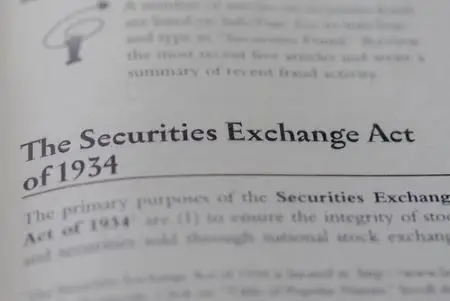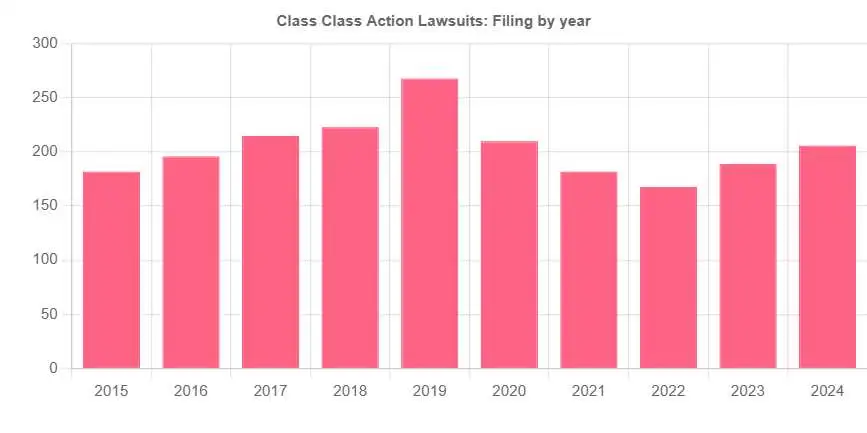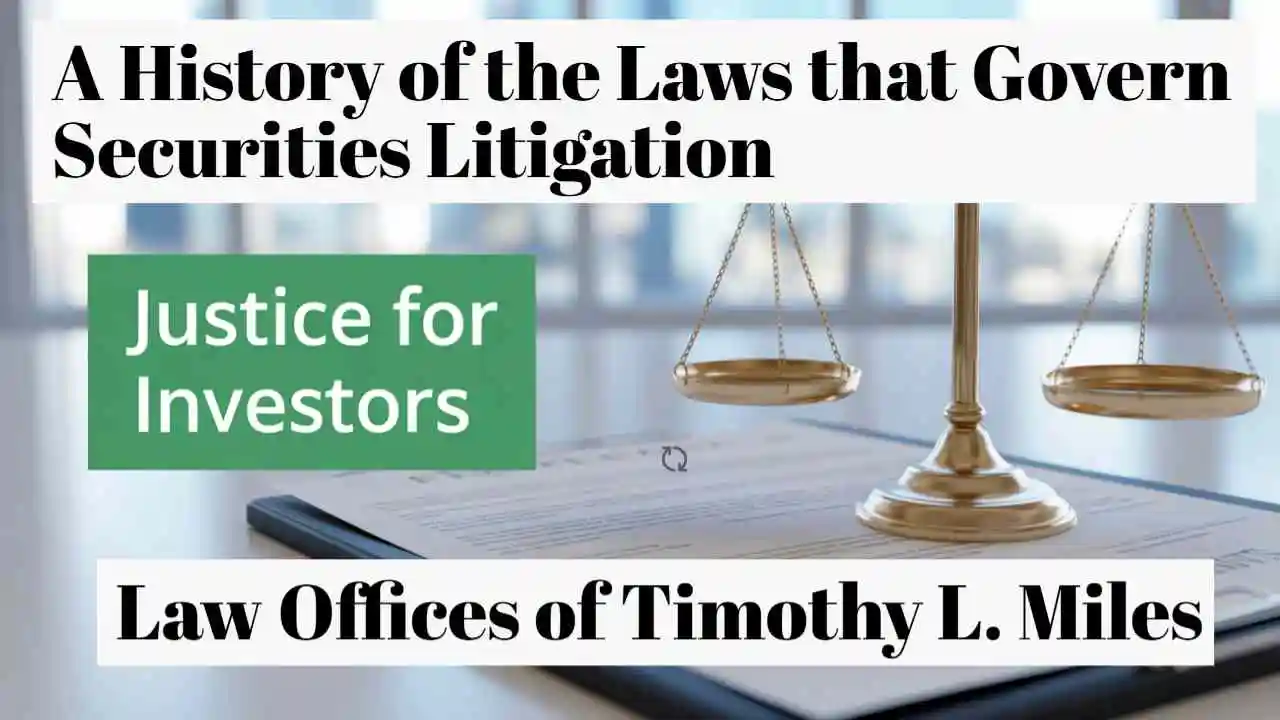Introduction to the History of the Laws Governing Securites Litigation

Securities fraud litigation represents a critical aspect of maintaining the integrity and transparency of financial markets, ensuring robust investor protections. The history of the laws governing securities litigation is extensive, reflecting the evolving nature of the financial industry and its regulations. The roots of securities fraud litigation can be traced back to the aftermath of the 1929 stock market crash, which led to the creation of the Securities Act of 1933 and the Securities Exchange Act of 1934.
These foundational statutes aimed to restore investor confidence by mandating full disclosure of pertinent information and establishing the Securities and Exchange Commission (SEC) to enforce federal securities laws. Over time, additional legislation, such as the Sarbanes-Oxley Act of 2002 and the Dodd-Frank Wall Street Reform and Consumer Protection Act of 2010, has been enacted to address emerging challenges and enhance investor protections.
The Sarbanes-Oxley Act, for instance, introduced stringent reforms aimed at improving corporate governance and accountability in response to major corporate scandals such as Enron and WorldCom. Investor protections were further bolstered by the Dodd-Frank Act, which was a direct response to the 2008 financial crisis.
This legislation enhanced regulatory oversight, increased transparency in financial transactions, and established new rules for derivatives trading. It also created mechanisms for whistleblowers to report securities fraud, providing them with financial incentives and protections against retaliation.
As securities fraud litigation continues to evolve, it remains a vital tool for safeguarding the interests of investors and maintaining public trust in financial markets. Legal professionals specializing in this area must stay abreast of ongoing regulatory changes and judicial interpretations to effectively navigate the complexities of securities law. This comprehensive guide on the history of securities litigation laws up to 2015 underscores the importance of these regulations in fostering a fair and transparent investment environment.
The Stock Market Crash of 1929

The Stock market crash of 1929 is often cited as the most devastating financial event in the history of the United States. This catastrophic event, which began on October 24, 1929, also known as Black Thursday, saw the collapse of stock prices on the New York Stock Exchange, leading to significant economic turmoil.
Over the ensuing days, the market continued to plummet, culminating in Black Tuesday on October 29, 1929. The crash wiped out billions of dollars in wealth and marked the beginning of the Great Depression, a decade-long period of economic hardship that affected not only the United States but also economies around the globe.
The consequences of the stock market crash were profound, leading to widespread bankruptcies, unemployment, and a loss of faith in financial institutions. Many shareholders found themselves in ruin as their investments became worthless overnight.
In response to the crash and its aftermath, there was a notable increase in securities class actions as investors sought to hold companies and executives accountable for their losses. These legal actions aimed to protect shareholder rights and ensure greater transparency and accountability within the financial markets.
The crash also led to significant reforms in financial regulation. The U.S. government implemented measures such as the Securities Act of 1933 and the Securities Exchange Act of 1934 to restore investor confidence and stabilize the financial system. These acts established guidelines for honest and transparent practices and created regulatory bodies like the SEC to oversee compliance.
The Stock Market Crash of 1929 thus serves as a pivotal moment in financial history, highlighting the importance of robust regulatory frameworks and the protection of shareholder rights to prevent future economic disasters.
The Goverments Response after Black Tuesday
The government’s response after Black Tuesday, the infamous market crash of October 29, 1929, was multifaceted and aimed at restoring confidence in the financial markets. One of the primary steps taken was the enactment of the Securities Act of 1933 and the Securities Exchange Act of 1934. These legislations were pivotal in laying the foundation for modern securities litigation and investor protections.
The Securities Act of 1933 aimed to ensure that investors received significant information regarding securities being offered for public sale, and to prohibit deceit, misrepresentations, and other fraud in the sale of securities. This was followed by the establishment of the SEC through the Securities Exchange Act of 1934, which was tasked with regulating the securities industry and enforcing federal securities laws.
The introduction of these regulations was crucial in providing a structured framework to protect investors from fraudulent activities and to promote transparency within the markets. The SEC was empowered to oversee and enforce compliance with these laws, effectively bringing a level of stability and trust back to the financial markets. This period also saw the development of more stringent accounting standards and disclosure requirements for publicly traded companies, thereby enhancing investor protections even further.
In addition to regulatory measures, the government also took steps to stabilize the economy through various monetary and fiscal policies. The establishment of the Federal Deposit Insurance Corporation (FDIC) under the Banking Act of 1933 provided a safety net for bank depositors, which helped to prevent bank runs and restore public confidence in the banking system.
Overall, the government’s comprehensive response to Black Tuesday laid the groundwork for a more resilient financial system, emphasizing the importance of robust securities litigation and stringent investor protections in safeguarding economic stability.
The Securities Act of 1933
The Securities Act of 1933, often referred to as the “truth in securities” law, was enacted to safeguard investors by ensuring that they receive significant information regarding securities being offered for public sale. It also aims to deter and penalize securities fraud. This fundamental piece of legislation came into existence following the 1929 stock market crash, which underscored the dire need for greater transparency and accountability in the financial markets.
The Act mandates that issuers of securities must register their offerings with the SEC and provide comprehensive and accurate disclosures about the company’s business operations, the securities being offered, and the risks involved.
Securities fraud litigation is a critical component of enforcing the Securities Act of 1933. When companies or individuals fail to comply with the registration and disclosure requirements, they may be subject to legal action from both regulatory authorities and private investors.
Such litigation serves not only to punish wrongdoers but also to deter future violations by holding violators accountable. Shareholder rights are also central to the Act’s provisions. Shareholders are entitled to truthful information about their investments, and if they suffer losses due to misinformation or fraudulent activities, they have the right to seek redress through securities fraud litigation.
The importance of the Securities Act of 1933 cannot be overstated in terms of protecting shareholder rights and maintaining market integrity. By requiring full disclosure, it helps level the playing field for investors, allowing them to make informed decisions based on accurate data.
This transparency is vital for maintaining investor confidence and ensuring the smooth functioning of capital markets. Moreover, the Act’s emphasis on preventing securities fraud is crucial in upholding the ethical standards of financial practices and protecting the interests of all market participants.
In conclusion, the Securities Act of 1933 plays a pivotal role in regulating the securities industry by promoting transparency, protecting shareholder rights, and deterring securities fraud through stringent disclosure requirements and robust legal frameworks for securities fraud litigation. This landmark legislation continues to serve as a cornerstone of investor protections and market integrity in the United States, fostering a fairer and more trustworthy financial environment.
The Securities Act of 1934

The Securities Act of 1934, also known as the Exchange Act, is a landmark piece of legislation in the United States that established comprehensive regulations for securities transactions on the secondary market. This Act was enacted to provide greater transparency and fairness in the securities markets, thereby bolstering investor protections.
One of its key provisions was the creation of the SEC, which was empowered to enforce federal securities laws and regulate the securities industry.
The SEC’s role includes overseeing the registration of securities, ensuring compliance with disclosure requirements, and enforcing rules against fraudulent activities.
A significant aspect of the Securities Act of 1934 is its provision for securities class actions. These legal actions allow groups of investors to collectively sue a company or its executives for violations of securities laws, typically involving misleading statements or fraudulent activities that have adversely affected the value of their investments.
Securities class actions are crucial for maintaining market integrity as they hold corporations accountable and provide a mechanism for investors to seek redress. By enabling such collective actions, the Act helps to deter misconduct and promotes a level playing field for all market participants.
Investor protections under the Securities Act of 1934 are further enhanced through stringent reporting requirements. Public companies are mandated to file periodic reports, including annual and quarterly financial statements, with the SEC. These disclosures ensure that investors have access to accurate and timely information about a company’s financial health and operational performance. This transparency is vital for making informed investment decisions and for maintaining confidence in the financial markets.
Moreover, the Securities Act of 1934 addresses insider trading by prohibiting individuals with access to non-public, material information from exploiting this knowledge for personal gain. Violations of insider trading laws can result in severe penalties, including fines and imprisonment. These provisions are essential in preventing unfair advantages and maintaining trust in the fairness of the markets.
In conclusion, the Securities Act of 1934 plays a pivotal role in safeguarding investor interests through its comprehensive regulatory framework. By facilitating securities class actions and enforcing stringent reporting and anti-fraud measures, the Act ensures robust investor protections. This legislative framework not only deters corporate malfeasance but also fosters transparency and fairness in the securities markets, thereby contributing to the overall stability and integrity of the financial system.
The Securities Litigation Uniform Standards Act (SLUSA) of 1998
The Securities Litigation Uniform Standards Act (SLUSA) of 1998 is a pivotal piece of legislation in the realm of securities class action lawsuits. Enacted by the U.S. Congress, SLUSA was designed to combat the surge in frivolous and opportunistic litigation that emerged in the aftermath of the PSLRA. SLUSA aims to prevent plaintiffs from circumventing the stringent requirements set forth by PSLRA by filing securities fraud claims under state law, thereby ensuring that such lawsuits are subject to federal standards.
By preempting state law claims and consolidating them under federal jurisdiction, SLUSA enhances the efficiency and consistency of legal proceedings in securities class actions, ultimately fostering a more stable and predictable investment environment.
Under SLUSA, securities class action lawsuits alleging misrepresentation or omission of material facts in connection with the purchase or sale of covered securities must be brought exclusively in federal courts. This provision significantly curtails the ability of plaintiffs to forum shop for more favorable state courts, which had previously contributed to inconsistent rulings and higher litigation costs.
Furthermore, SLUSA’s requirement for uniform federal standards helps to ensure that legitimate claims are properly addressed while deterring meritless lawsuits that can burden both the courts and the financial markets.
The impact of SLUSA on securities class action lawsuits has been profound, as it has led to a marked decrease in the number of state-level securities fraud cases. By channeling these cases into the federal system, SLUSA has fostered a more centralized and streamlined approach to adjudicating securities fraud claims. This centralization not only promotes judicial economy but also provides greater clarity and predictability for investors and corporations alike.
Moreover, by reducing the prevalence of perceived baseless litigation, SLUSA contributes to a more robust and resilient financial market, where investor confidence is bolstered by the assurance that genuine grievances will be addressed within a coherent legal framework.
In summary, the Securities Litigation Uniform Standards Act (SLUSA) of 1998 represents a significant advancement in the regulation of securities class action lawsuits. By imposing federal standards and limiting plaintiffs’ ability to exploit state laws for tactical advantages, SLUSA has played a crucial role in curbing frivolous litigation and promoting a fairer, more efficient judicial process. As a result, both investors and companies benefit from a more predictable and equitable legal landscape, fostering a healthier investment climate overall.
The Private Securities Litigation Reform Act (PSLRA) of 1995
The PSLRA represents a significant legislative milestone in the realm of securities fraud litigation, aimed at curbing frivolous lawsuits and enhancing the overall integrity of financial markets. Enacted by the United States Congress, the PSLRA was designed to address the what some perceived as rampant abuses in class action securities fraud litigation during the early 1990s. Prior to its enactment, numerous lawsuits were filed with little factual basis, often resulting in costly settlements that burdened corporations and their shareholders.
The PSLRA introduced stringent pleading requirements, mandating that plaintiffs present compelling evidence of fraudulent intent before proceeding with their claims. This legislation also established a heightened standard for proving securities fraud, requiring a clear demonstration of scienter, or intent to deceive, manipulate, or defraud.
One of the key provisions of the PSLRA is the imposition of an automatic stay on discovery once a motion to dismiss is filed. This measure prevents plaintiffs from fishing for evidence through expensive and intrusive discovery processes without first establishing a solid foundation for their allegations.
Additionally, the PSLRA instituted the “safe harbor” provision, which protects companies from liability for forward-looking statements that are made in good faith and accompanied by appropriate cautionary language. This provision encourages corporations to provide future projections and guidance without fear of unwarranted legal repercussions, thereby fostering greater transparency and communication with shareholders.
The PSLRA also significantly impacted shareholder rights by empowering lead plaintiffs in class action lawsuits. Traditionally, class actions were often controlled by lawyers who sought to maximize their fees rather than prioritize the interests of shareholders. The PSLRA shifted this dynamic by allowing the court to appoint a lead plaintiff with the largest financial stake in the outcome of the case.
This reform aimed to ensure that those with substantial investments – and thus a greater incentive to achieve favorable outcomes – would have a more prominent role in directing litigation strategy and settlement negotiations.
Since its implementation, the PSLRA has had a profound effect on securities fraud litigation, reducing the incidence of baseless claims and fostering a more judicious approach to class action lawsuits. Critics argue that the heightened pleading standards and discovery stay provisions may sometimes impede legitimate cases from advancing, potentially undermining shareholder rights.
Nonetheless, proponents contend that the PSLRA strikes an appropriate balance between deterring frivolous suits and preserving investors’ ability to seek redress for genuine grievances.
In conclusion, the PSLRA serves as a pivotal regulatory framework that reshaped the landscape of securities fraud litigation. By instituting rigorous pleading requirements, implementing protective measures like the discovery stay and safe harbor provisions, and enhancing shareholder rights through lead plaintiff reforms, the PSLRA has contributed to a more disciplined and equitable system for addressing securities fraud.
While debates continue regarding its impact on access to justice for shareholders, there is no denying that the PSLRA has fundamentally transformed how securities fraud cases are litigated in the United States.
Recent Trends in Filings and Securities Class Action Settlements
- Number of Settlements: The number of securities class actions settlements increased slightly in 2024 compared to 2023 (88 vs. 83). After a six-year decline, resolutions increased by 17% with 217 cases resolved in 2024.
- Settlement Amounts:
- The median settlement amount declined in 2024 compared to 2023 ($14 million vs. $15 million). This is potentially due to a decrease in “plaintiff-style damages” (a proxy for investor losses).
- However, if settlements exceeding $1 billion are excluded, the average settlement in 2024 ($43 million) is substantially greater than the inflation-adjusted average in 2023 ($35 million). The average settlement value in 2024 ($43 million) is also the highest since 2016.
- Total settlement dollars in 2024 were $3.8 billion, with the top 10 settlements accounting for approximately 60% of this amount.

Mega Settlements
- There was a total of seven mega-settlements in 2024, or two fewer than the nine in 2023. These seven mega-settlements contributed over half (54%) of the total settlement value for 2024.

The Global Landscape of Securities Class Actions
Securities class actions are not confined to the United States; they are a global phenomenon. The evolving legal landscape in various countries presents both challenges and opportunities for investors.
International Trends
Countries such as Canada, Australia, and those in the European Union are witnessing an increase in securities class actions. The adoption of collective redress mechanisms and regulatory changes is shaping the global landscape, providing investors with new avenues for recourse.
Cross-Border Considerations
Investors must be aware of the complexities associated with cross-border securities class actions. Jurisdictional issues, varying legal standards, and differing regulatory environments can complicate the pursuit of claims on an international scale.
The Future Trends in Securities Class Actions
Looking aheqad, the landscape of securities class action lawsuits is likely to continue evolving. Several factors will shape the future of these legal actions.
Regulatory Changes
Ongoing regulatory developments, including potential reforms to securities laws, will impact how class actions are filed and resolved. Investors should stay informed about changes that may affect their rights and options for recourse.
Technological Advancements
The integration of technology in the legal process, including the use of artificial intelligence and data analytics, will likely enhance the efficiency of securities class actions. These advancements may streamline case management and improve outcomes for investors.
Conclustion
Securities fraud litigation has undergone significant evolution since its inception, reflecting the dynamic nature of financial markets and the continuous efforts to protect shareholder rights. Over the years, various laws have been enacted to address fraudulent practices and ensure transparency and accountability within the securities industry.
The Securities Act of 1933 and the Securities Exchange Act of 1934 were among the first fundamental legislations aimed at curbing securities fraud by mandating disclosure requirements and establishing the SEC to enforce these laws.
As financial markets grew more complex, additional regulations and amendments were introduced to address emerging issues. The PSLRA, for instance, aimed to curb frivolous lawsuits by implementing stricter pleading standards and limiting damages. This was followed by the Sarbanes-Oxley Act of 2002, which introduced significant reforms in response to major corporate scandals, emphasizing corporate governance and internal controls.
In recent years, there have been notable trends in securities litigation, reflecting the changing landscape of the financial sector. One such trend is the rise in cases related to cybersecurity breaches and data privacy, as companies increasingly rely on digital platforms. Additionally, there has been a growing focus on environmental, social, and governance (ESG) factors, with shareholders pushing for greater accountability on issues such as climate change and social responsibility.
Overall, the history of securities litigation is marked by a continuous effort to adapt legal frameworks to evolving market conditions, ensuring that shareholder rights are protected while fostering a fair and transparent financial system. As new challenges arise, it is imperative for regulators, lawmakers, and stakeholders to remain vigilant and responsive to safeguard the integrity of the securities markets.
Contact Timothy L. Miles Today for a Free Case Evaluation
If you suffered substantial losses and wish to serve as lead plaintiff in a Securities fraud litigation, or have questions about securities class action lawsuits, or just general questions about your rights as a shareholder, please contact attorney Timothy L. Miles of the Law Offices of Timothy L. Miles, at no cost, by calling 855/846-6529 or via e-mail at [email protected].(24/7/365).
Timothy L. Miles, Esq.
Law Offices of Timothy L. Miles
Tapestry at Brentwood Town Center
300 Centerview Dr. #247
Mailbox #1091
Brentwood,TN 37027
Phone: (855) Tim-MLaw (855-846-6529)
Email: [email protected]
Website: www.classactionlawyertn.com



